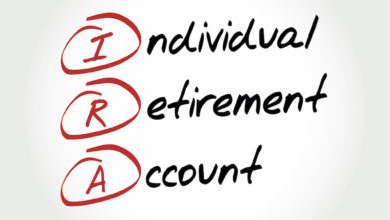Advanced Financial Planning for the High-Income 60s

“Time is the scarcest resource, and unless it is managed, nothing else can be managed.” – Peter Drucker
Embarking on your retirement investment journey at 60 might seem like a challenge, but fear not – the clock is ticking, and your decisions now shape your golden years. Wondering if it’s too late or what strategies to adopt? We have your back! Discover targeted advice on crafting or fine-tuning your retirement plan, emphasizing risk management, income generation, and long-term growth. Uncover actionable steps to invest at 60, build a formidable retirement portfolio, leverage tax-advantaged accounts, and navigate Social Security for a maximized nest egg. Your financial future awaits – dive in and secure it!
Key Takeaways
- Establishing clear retirement goals tailored to desired lifestyle, travel plans, and legacy wishes is crucial for planning the financial resources needed to support retirement.
- Evaluating current financial status involves reviewing existing savings and debt, managing both effectively, and considering additional income sources like Social Security and rental income.
- Investing in a diversified retirement portfolio with a balance between fixed-income investments, dividend-paying stocks, REITs, and other assets is key to managing risk and ensuring financial stability in retirement.
Understanding Your Retirement Goals at 60
Begin your retirement journey by clearly defining your goals. Retirement is not a sudden stop but rather a transition into a new phase of life that comes with its own aspirations and objectives. These may include having a peaceful beachfront residence, traveling the world, or leaving behind a legacy for future generations.
In order to support the lifestyle you envision during retirement, it’s important to estimate how much financial resources will be needed to achieve these goals. Remember that your financial plan should be tailored around fulfilling your dreams instead of forcing them to fit within predetermined means.
Desired Lifestyle
The retirement lifestyle you desire greatly affects your spending habits. Some popular retirement goals include traveling, home renovations, pursuing hobbies, enjoying more family time, and providing care for dependents with special needs. Each of these aspirations has financial implications that need to be considered.
To ensure a comfortable living standard in retirement, experts recommend having around 70% of your pre-retirement income available; this may require additional savings beyond what social security benefits provide. Accurately defining the type of lifestyle you want is crucial in setting achievable financial goals as your retirement approaches [1].
Travel Plans
Travel is often a top priority for retirees. Whether it’s discovering lesser-known destinations or visiting family and friends scattered around the world, travel should be an important consideration in your retirement plan. To ensure everyone is on the same page, make a bucket list and set specific goals for travel with your spouse or partner [2].
Seniors can keep their travels affordable by taking advantage of discounts, planning longer trips to save more money overall, and being open to last-minute deals. With careful budgeting and flexibility, you can explore all that the world has to offer during retirement!
Legacy Wishes
Financial preparations and legacy planning play a crucial role in retirement planning. Legacy goals often include providing for family members with special needs, supporting grandchildren’s education, helping adult children make major purchases, and passing down valuable assets like a family home.
Legacy planning is not just about leaving behind material possessions. It also involves imparting important values such as hard work, gratitude, and community involvement to future generations. As you plan for your retirement years, it is essential to consider these wishes of creating a connection between the present and the future through thoughtful legacy planning.
Assessing Your Current Financial Situation
Once you have established your retirement objectives, evaluate your present financial standing. What is the current extent of your savings? How are you handling any outstanding debts? Are there additional sources of income available to utilize? Do you know what your retirement score is? Addressing these inquiries will offer a more distinct overview of your financial situation and lay the groundwork for planning for retirement.
Indeed, the funds already saved serve as a crucial base on which to construct plans for enjoying life after work ends.
Existing Savings
As an essential component of retirement preparation, one’s existing savings are crucial in ensuring financial stability and impacting potential post-retirement earnings. With the rise of defined contribution plans like 401(k)s and individual retirement accounts (IRA), these funds often make up a majority of retirement savings, necessitating careful management and investment.
To employer-provided pension schemes, personal savings hold considerable weight in determining the standard of living during retirement years.
Debt Management
It is crucial to balance the importance of saving for retirement with addressing high-interest debts like credit card balances and personal loans. These financial obligations can significantly decrease your savings and affect your quality of life in retirement. If interest rates are low, it may be more beneficial to invest extra money into your retirement accounts instead of using it towards paying off a mortgage.
To avoid facing financial strain during retirement years or potential legal consequences, try not to take on new debts such as education loans that will extend beyond this stage in life.
Other Sources of Income
When planning for retirement, it is wise to manage savings and debt and explore other potential sources of income. A substantial part of this guaranteed income stream can come in the form of Social Security benefits, which are based on earnings over 35 years with the highest incomes [3]. It may also be worth considering options such as renting out your property while traveling or looking into pension plans to supplement your retirement funds.
These various streams of income have the ability to strengthen your retirement savings, providing you with more financial flexibility during that time.
Investment Options for Retirement at Age 60

After evaluating your financial status, delve into retirement investment options, including various investment accounts. As retirees transition away from an active income, the focus should be more on conservative investments to protect against losses. A diversified retirement account should contain a mix of lower-risk assets like bonds and certificates of deposit, balanced with growth-oriented assets like stocks. This balance should align with the retiree’s age and risk tolerance, ensuring a conservative portfolio overall.
To protect against inflation, retirement investments should aim for a return of at least 4%-6% per year, beyond the income generated or saved [4].
Fixed Income Investments
Fixed-income investments play a crucial role in retirement portfolios due to their potential to provide stability, predictability, and risk diversification. They are also vital for ensuring steady income sources. Bonds serve as the primary means of fixed-income investment and can help preserve wealth while generating consistent returns.
Investors may incorporate other forms of fixed-income assets, such as mutual funds, bond funds, and ETFs, into their overall investment strategies in order to diversify within this asset class. By combining these options with other investments, risks can be minimized across various bonds and maturities.
Dividend Paying Stocks
Dividend stocks are issued by companies that offer a steady source of income through regular payouts. These types of stocks, with dividend income from which usually come from established and profitable companies, provide an element of security in a retirement portfolio.
For retirees looking for consistent annual income, dividend aristocrats – stocks from companies that have increased their dividends every year for 25 consecutive years – can be relied upon to deliver stability. By investing in these dependable options within the stock market, individuals can ensure a stable stream of earnings throughout their retirement years.
Real Estate Investment Trusts (REITs)
REITs provide a steady source of income through dividends and also offer attractive tax benefits such as potential tax-deferred income and advantageous distribution classifications. These investment vehicles have the ability to diversify their portfolio by investing in various real estate types, including healthcare facilities and senior living properties, which may see increased demand due to demographic changes like an aging population. REITs are widely available for investors through inclusion in different 401(k) plans, mutual funds, and ETFs.
Building a Diversified Retirement Portfolio

Creating a diverse retirement portfolio is an art that requires finding the right balance between potential growth and risk management. This can be achieved by combining dividend-paying stocks, fixed-income securities, and other investment options.
The goal is to construct a portfolio that can withstand market changes while also providing consistent income during one’s retirement years.
Asset Classes
The foundation of your retirement portfolio is built upon various asset classes, with the proper asset allocation also being crucial. As you approach retirement, it is important to increase the portion of fixed-income securities in your portfolio as a means to protect capital and secure a dependable source of income.
Within a retirement portfolio, including dividend-paying stocks from established and profitable companies can provide stability. For diversification purposes, retirees may want to consider adding mutual funds, single stocks, bonds, etc.
ETFs (exchange-traded funds), index funds, and real estate into their portfolios.
By incorporating these different asset classes, investors can achieve more balance within their investment strategy while also benefiting from potential long-term growth opportunities through assets such as real estate or individual company stocks.
Risk Tolerance
Risk tolerance, which refers to an investor’s willingness to take on risk, is a crucial factor in creating a well-diversified investment plan. One’s loss aversion can heavily influence their decision-making when it comes to investing and may hold more weight than the potential for gains.
It is important to consider individual behavior and past reactions to investments when assessing risk tolerance, along with other factors, such as time horizon and financial capacity for taking risks. This information can assist in developing an appropriate investment strategy that aligns with one’s comfort level of risk-taking.
Diversification Strategies
Diversification in investment involves spreading out funds across a range of asset classes. Its purpose is to reduce risk, facilitate growth, and minimize the impact of any individual underperforming investment on future results.
Periodic rebalancing of the portfolio is necessary to maintain diversification and align its allocation with changes in both market conditions and personal objectives.
Investment in a diversified retirement portfolio carries inherent risks associated with market fluctuations, which may result in a potential loss of initial capital. It entails investing across various asset classes as a means of managing these risks while promoting steady growth over time.
Maximizing Tax-Advantaged Retirement Accounts
Maximizing tax-advantaged retirement accounts such as Traditional and Roth IRAs is a smart way to increase your nest egg for retirement while also taking advantage of valuable tax breaks. These types of accounts offer unique benefits, making them essential components in any comprehensive plan for post-career financial stability.
Traditional IRA
A Traditional IRA offers the advantage of immediate tax benefits and allows for returns to compound through tax deferral, ultimately increasing savings over time. In 2024, individuals can contribute up to $7,000 annually towards their Traditional IRA account. Those aged 50 or older have a higher limit of $8,000. Whether these contributions are deductible from taxes depends on one’s income and participation in other retirement plans.
Roth IRA
A key benefit of Roth IRAs is the potential for tax-free income during retirement, particularly beneficial for individuals expecting to have a higher tax bracket. Unlike traditional IRAs, Roth IRAs offer more flexibility when it comes to withdrawals. This means that certain reasons may allow individuals to make penalties and tax-free early withdrawals before reaching retirement age.
Catch-Up Contributions
One way to boost retirement savings is through catch-up contributions, which are available for individuals who are 50 years old or older in their respective retirement accounts. The annual limit for IRA contributions in 2023 remains at $6,500, but those aged 50 and above can contribute an additional amount of $1,000 as a catch-up contribution. In the following year (2024), this will increase to a total of $7,000 plus the allowed catch-up contribution.
Navigating Social Security Benefits

For many Americans, retirement income relies heavily on social security benefits. To properly manage these benefits, it is important to understand the full retirement age and the options for claiming early or delaying payments. These benefits are designed to replace approximately 40% of pre-retirement earnings and play a vital role in ensuring financial stability during retirement.
Full Retirement Age
The full retirement age (FRA) is the designated age at which an individual can receive 100% of their Social Security retirement benefits without any deductions. This threshold varies depending on one’s birth year, determining when they are eligible for complete social security benefits.
For those born between 1943 and 1954, the FRA stands at 66 years old. It gradually increases by two months each year until reaching a maximum of 67 for individuals born in or after 1960.
Early Claiming
Opting to receive Social Security retirement benefits before reaching the full retirement age will result in a permanent decrease in your payments. This decrease can be as much as 30% if you claim at the minimum age of 62 despite having a full retirement age of 67. It is crucial to fully understand how early claiming can affect your income during retirement and carefully consider its implications before making any decisions.
Delayed Claiming
On the contrary, prolonging the receipt of Social Security benefits beyond full retirement age can result in a higher monthly payout, potentially increasing up to 132% if claimed at age 70. Before making this decision, it is crucial to carefully assess your overall financial status, health condition, and life expectancy, as these factors play a significant role in determining whether delaying social security would be beneficial for you.
Preparing for Health Care Expenses in Retirement

Retirees often face significant costs associated with health care. In fact, it is estimated that a couple aged 65 retiring in the year 2022 will need to budget around $315,000 for their medical expenses. Thus, having a well-thought-out plan for healthcare costs is crucial when preparing for retirement.
This planning should consider factors such as Medicare benefits and long-term care insurance coverage. It’s also important to factor in potential out-of-pocket expenses that may arise. Taking all of these elements into account can help ensure a smooth journey toward retirement without any unexpected financial burdens related to healthcare.
Medicare
Medicare is made up of several components. Part A provides coverage for hospital care, while Part B covers medical services. There is also the option of enrolling in Medicare Advantage (Part C), which offers a comprehensive alternative to Original Medicare. There is Part D specifically designed for prescription drug coverage. For those who require more extensive benefits beyond Parts A and B, Medigap can be purchased as supplemental insurance.
Enrollment in Medicare should take place during the Initial Enrollment Period to avoid facing penalties for signing up late.
Long-Term Care Insurance
Long-term care insurance is specifically created to cover services not included in health insurance, Medicare, or Medicaid. This type of policy can provide coverage for various types of assistance, such as home-based healthcare or nursing facility care.
One must take into account the expense when considering long-term care insurance. Typically premiums for traditional plans are lower if purchased earlier in life, ideally around the age range of 50-60 years old.
Out-of-Pocket Expenses
Expenses for healthcare during retirement that are paid out of your own pocket can consist of premiums, copays, deductibles, and services not covered by Medicare. If these costs turn out to be higher than expected, they could have a significant impact on your savings, specifically meant for retirement. It is essential to plan ahead for such expenses in order to ensure a stress-free and secure retirement.
It is important to keep in mind that when preparing financially for your post-retirement years, you should also consider the potential burden of paying medical expenses without support from an employer’s insurance benefits or government-funded programs like Medicare. To save for basic necessities.
Inflation and Cost of Living Considerations
As the years go by, inflation can reduce the value of your retirement savings, leading to a decrease in purchasing power during your retirement. It is important to strategize for at least 30 years and account for inflation when planning a retirement portfolio in order to maintain its value over time.
To combat the effects of inflation, it is recommended that retirees allocate some portion of their portfolio toward stocks since, historically, they have shown higher returns than average rates of inflation. This ensures longevity and stability in terms of purchasing power throughout one’s retirement.
Inflation Impact
The diminishing value of a fixed income due to continuous inflation can greatly impact the purchasing power of retirement savings. As prices continue to rise, there may be a significant gap between expected retirement income and actual living expenses, leading to larger withdrawals from one’s portfolio.
Hence, it is imperative to safeguard your retirement funds against inflation in order for them to provide financial security during later years.
Income-Generating Assets
One effective strategy to combat inflation is incorporating income-producing assets, such as dividend growth stocks, annuities, and bonds, into one’s investment portfolio. These types of investments can provide a consistent stream of earnings, which serves as protection against the effects of rising prices.
It is important for an investor to maintain a diversified portfolio that includes both stocks and bonds in order to effectively manage risks associated with inflation and fluctuating interest rates. By having a mix of these assets, individuals are better equipped to navigate through potential economic challenges caused by changes in market conditions.
Appreciating Assets
One way to potentially outpace inflation over a longer period of time is by investing in assets that tend to increase in value, such as stocks. Inflation and taxes have historically had less impact on stock investments compared to bonds and cash options, making them an important element for retirees looking for growth potential within their portfolio.
Working with a Financial Advisor
Collaborating with a financial advisor can be extremely beneficial when it comes to your individual retirement account and planning journey. These advisors have the ability to:
- Evaluate personal requirements in order to determine the best combination of investments for an all-around portfolio
- Assist in selecting the most suitable annuity option or strategy for generating retirement income
- Provide tailored support that takes into consideration individual circumstances and preferences
Their expertise is not limited to the initial stages, as they are equipped to offer ongoing guidance throughout different phases of life and help you navigate through intricate aspects involved in retirement planning.
Unlock Your Financial Future: IFW’s Complimentary Retirement Roadmap Experience and Financial Knowledge Center
To assist individuals in determining their IFW Retirement Score, the Institute of Financial Wellness (IFW) offers a complimentary ‘IFW Retirement Roadmap Experience.’ This experience consists of three simple steps: first, sign up. Second, schedule an introductory call. Finally, meet with an IFW Certified Financial Professional.
To this service, IFW also provides access to our Financial Knowledge Center. Here, you can find a wealth of information, including resources and guidance that can aid individuals in achieving their financial goals, such as retirement planning.
Full Summary
High-income individuals in their 60s should have a thorough understanding of financial planning for retirement. This includes setting clear goals for the golden years, evaluating current finances, exploring investment options, and building a diversified portfolio specifically tailored to support retirement needs.
Making the most out of tax-advantaged accounts like IRAs or 401(k)s is crucial as well as navigating social security benefits strategically. With potential assistance from a financial advisor, one must also prepare for healthcare expenses and account for inflation along with other cost-of-living considerations to ensure long-term financial stability during this phase of life.
Frequently Asked Questions
How much should I invest to retire at 60?
Financial experts advise that people achieve retirement at the age of 60 by having savings equivalent to 7-8 times their current yearly income. This will serve as a solid foundation for a satisfying retirement life.
What is the best retirement portfolio for a 60-year-old?
A suitable retirement portfolio for a 60-year-old individual should have a balanced mix of investments, typically with 60% in equities and the remaining 40% in fixed-income securities. This helps minimize risk while still aiming for decent returns. Alongside this strategy, experts advise considering options such as defined contribution plans, traditional IRAs, Roth IRAs, cash-value life insurance policies, and guaranteed income annuities to enhance one’s overall investment approach.
Is it too late to invest at age 60?
At the age of 60, it is still possible to begin investing and create a robust investment portfolio while striving towards your desired financial goals. It’s never too late to take control of your finances through strategic investments.
How should I invest my money in my 60s?
In your 60s, it is advisable to have a moderate investment portfolio consisting of a combination of stocks (60%), bonds (35%) and cash (5%). This will help in balancing the risk and return involved. It may also be beneficial to consider low-risk investments like bonds, dividend-paying stocks, or balanced portfolios for steady returns and safeguarding your capital.
What is the best retirement plan for a 60-year-old?
When creating a retirement plan at the age of 60, it is beneficial to prioritize contributions towards tax-advantaged plans such as a Roth IRA. By doing so, individuals can take advantage of tax-free withdrawals during their retirement years.
Investing in a Roth IRA offers an efficient way to save for one’s later years while also minimizing taxes. It allows for strategic planning and management of finances with the added benefit of being able to withdraw funds.
After 18 years as President and Founder of TheaterMania and OvationTix, Darren is excited to be on a new journey as the President and Co-Founder of The Institute of Financial Wellness. (The IFW)
For consumers, The IFW provides financial education, resources, and services that help people live their best life.
For Financial Professionals, The IFW provides proven sales and marketing systems, state-of-the-art technology, training, and support to financial professionals nationwide. The IFW helps financial professionals grow their practices to the next level! IFW Certified Financial Professionals are an elite group of professionals that, together with the IFW, help people succeed financially and live their best lives.






